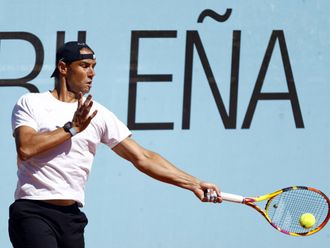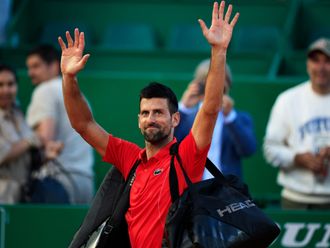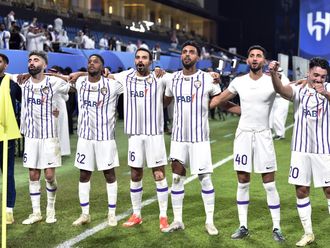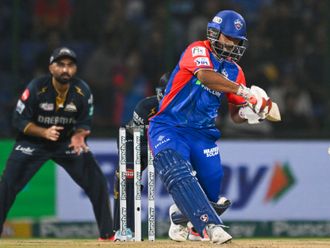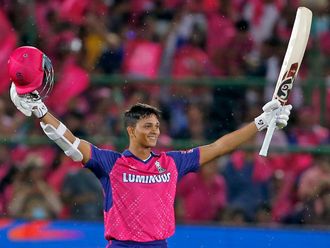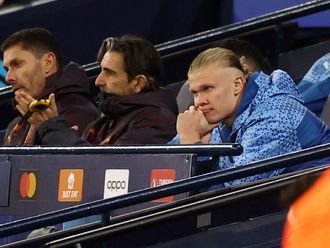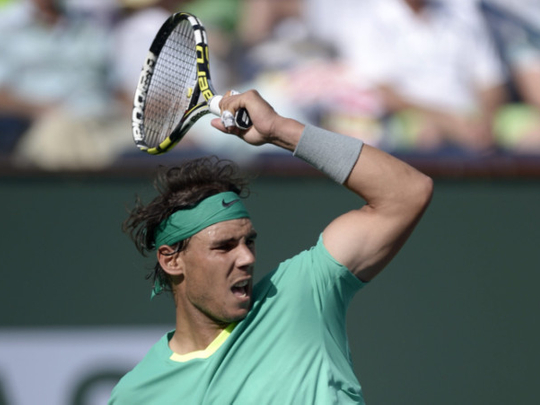
Indian Wells, California: In the era of the “Big Four” men, and their combined total of 34 grand slams, it takes a lot to impress modern tennis fans. Yet Rafael Nadal shocked everyone — including himself — by powering his way to the Indian Wells title on Sunday night. Whatever the expectations of Nadal’s comeback, few would have backed him to steam through a full-strength field, particularly on the sort of unyielding concrete courts that have always inflicted maximum damage on his sensitive knees.
“A lot of things happened the last seven months,” the Spaniard said after the final. “To be back here and to have this very heavy trophy with me is amazing, no?”
The result was full of statistical resonance. After this 4-6, 6-3, 6-4 victory against Juan Martin del Potro, Nadal now stands clear of the field with 22 Masters titles, one more than Roger Federer in second place.
His victory on Sunday was also his 600th at ATP level, a figure that has a practical relevance. It means that, from the start of next season, he qualifies for tennis’s answer to the senior citizen’s bus pass, and thus can skip one of the year’s nine mandatory Masters events without being penalised.
Winning per centage
For the moment, too, Nadal has moved to the top of the tree in terms of winning per centage. His 600 wins make up 83 per cent of his 723 matches, putting him a sliver ahead of Bjorn Borg on 82.7. This position could yet change again, for most players become less consistent towards the end of their careers.
Supporters of John McEnroe, for instance, can point out that Borg only surpassed their own idol (81.5 per cent) because he walked away from the sport while he was still just 26 years old and at the peak of his ability, whereas McEnroe retired in 1992, eight years after his final grand slam title. However, you would have to imagine that Nadal will probably finish ahead of his long-term rival Federer (also 81.5 per cent) on this measure. And that, unless he suffers a physical reaction to this week’s exertions, he will probably win a 12th grand slam title at Roland Garros in June, so moving within five of Federer’s tally.
The delicate question of who is the GOAT — greatest of all time — continues to hang in the balance. These two icons faced each other in an anti-climactic quarter-final on Thursday, which Nadal won easily with the help of Federer’s bad back.
But even if that match disappointed, the rest of last week’s storyline was so gripping, and its denouement so unlikely, that it could have been a movie script. Nadal had spent seven months off the tour, lest we forget, to give his painful left knee a chance to recover.
Here he was, however, covering a huge amount of ground and firing off a stream of winners. Del Potro was physically overpowered by a man who had been written off as a busted flush.
It is true that conditions in Indian Wells are more conducive to Nadal’s style than most hard courts, thanks to the thin air of desert California (altitude 840 metres) and unusually lively balls. High bounces work against Andy Murray and Novak Djokovic — who like to stay tight to the baseline. Whereas Nadal prefers to drop two or three yards further back, so that he can wind up the torque on his hammer-thrower’s forehand.
Murray and Djokovic should be more at home in Miami this week. They should fancy their chances of meeting in the final for neither Federer nor Nadal are taking part. “The doctors recommend me to be back home for a few weeks and rest a little bit,” Nadal said.
Still, we are less than a month away from Monte Carlo, where Nadal has a record of eight successive championship titles since 2005.
“Rafa looks like he wants to keep the rallies shorter, so he is hitting the ball even harder than before, which is a frightening thought for anyone,” former British No 1 Andrew Castle said.
— The Telegraph Group Limited, London 2012


